Ramakrishna Sevamandira
“Shiva Jnane, Jiva Seva”- service to God in man
A chain of simple hut temples of Sri Ramakrishna in the rural areas called as Seva Mandira, wherein the service and spread of culture is being taken up along with the worship of Sri Ramakrishna, Sri Sarada Devi, Swami Vivekananda and local deities.
This Seva Mandira will be managed by the local people under the guidance of Ashrama and the basic concept and mode of operation of the project is to make it “by the people and for the people”. Local school teachers, leaders and volunteers who are service minded will be identified and trained in the Mysore Ashrama and asked to manage the Seva Mandira.
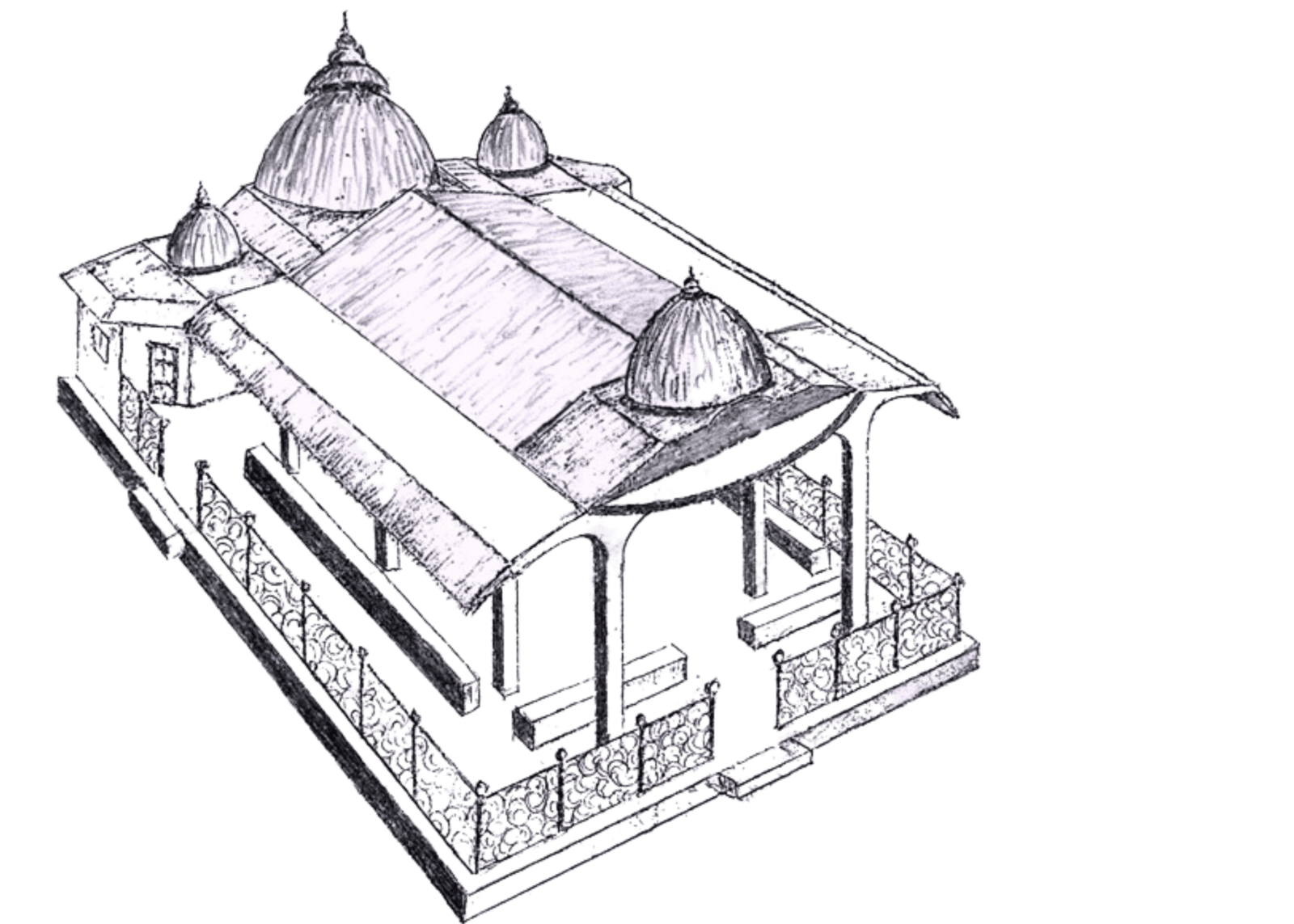

During his stay at BR Hills Swami Sureshananda initiated a few welfare measures for the tribal and rural folk. Approached by the Zilla Panchayat officials, the Swami joined hands with the State Government in constructing houses for the poorest of the poor in the most backward region of the Chamarajnagar district. With the financial aid received through Swami Prabuddhanandaji and devotees of the Ashrama, Swami Sureshananda bore the major share of the cost of the construction of 176 houses at three places of the district, Tenkanamole, Elakuru and Handijogi Colony (later renamed as Vivekananda Colony). These houses were constructed on the land site allotted to the beneficiaries by the Govt. After the construction the houses were handed over to the Govt. which in turn allotted them to the beneficiaries.
In order to support, safeguard and to continue to maintain their traditions and practices along with improved ways of living a new project to be implemented at Tenkanamole was conceived with the help of the service minded elders of the village and social workers in B R Hills.
Background
Swami Vivekananda writes to Swami Shuddhananda from Almora on 11th July 1897: – “The easiest way is to take a hut — make it a temple of Guru Maharaj! Let the poor come here to be helped, also to worship. Let there be Kathâ (Puranic recitals) morning and evening there — through that you may teach all you want to teach the people. By degrees the people will be interested. They will keep up the temple themselves; maybe the hut temple will evolve into a great institution in a few years. Let those that go to relief-work first select a central spot in each district and start such a hut-temple, from which all our little work is to proceed.”
When Most Revered Swami Vireshwarananandaji Maharaj visited Mysuru in the year 1983, he expressed the need to start a chain of simple hut temples of Sri Ramakrishna in the rural areas, wherein the service and spread of culture is being taken up along with the worship of Holy Trio and local deities.
In this way the Sri Ramakrishna Seva Mandira serves the villagers under one roof as a Community Welfare Centre, a cultural hall and a place of dissemination of knowledge and not merely as a place of worship. Suitable training in all these will be offered to the local village youths and the social workers in the area. These volunteers will manage the project under the guidance of the Mysuru Ashrama.
Seva Mandiras will be a model in transforming the village temples into temples of service to the poor and a place for dissemination of knowledge to the needy.
Triangular concept
Triangular concept
Seva Mandira includes the following three mandiras under one roof:
- A central mandira without much rituals where along with pictures of the Holy Trio and the local gods and goddesses/ deities are placed and worshipped. This mandira is to be named as Sri Ramakrishna Seva Mandira.
- Nara Narayana Seva Mandira where service to the poor is conceived as worship of God. This is in line with Sri Ramakrishna Paramahamsa’s teaching “Shiva Jnane, Jiva Seva”- know that service to humanity is equivalent to worship of Shiva (God). Here service itself is worship.
- The Jnanaprasara mandira, to disseminate knowledge of spiritual, cultural and school subjects.
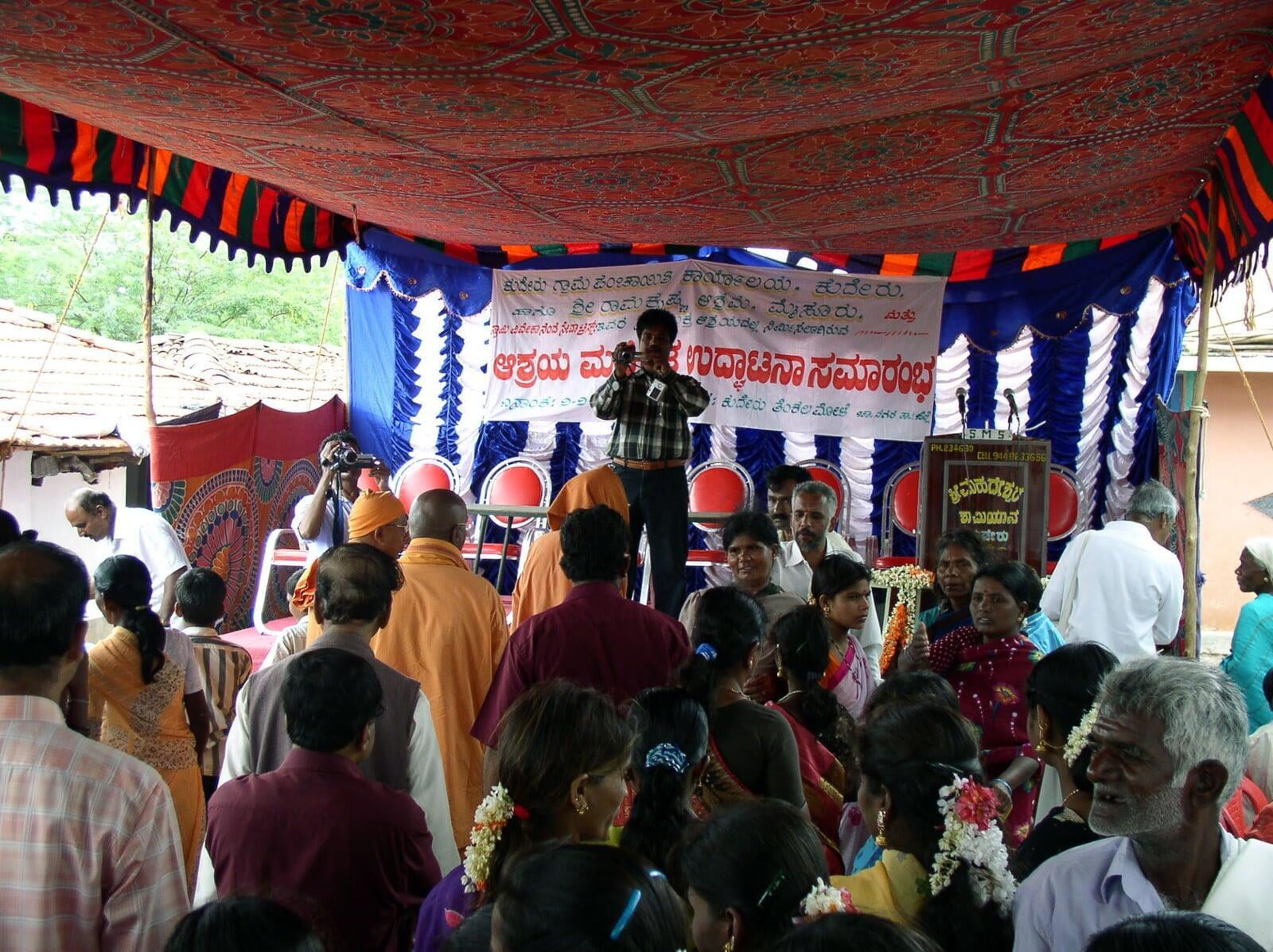
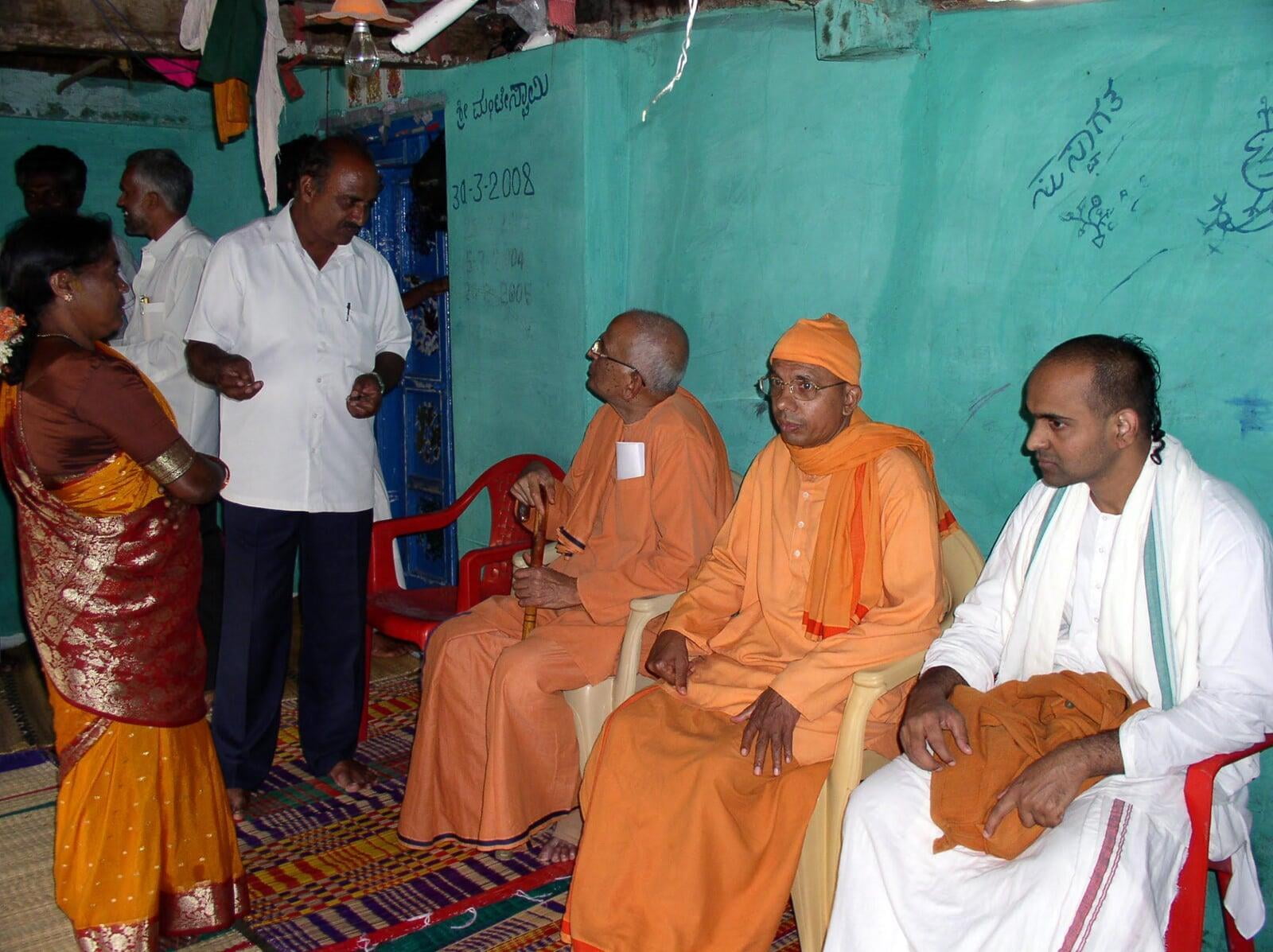
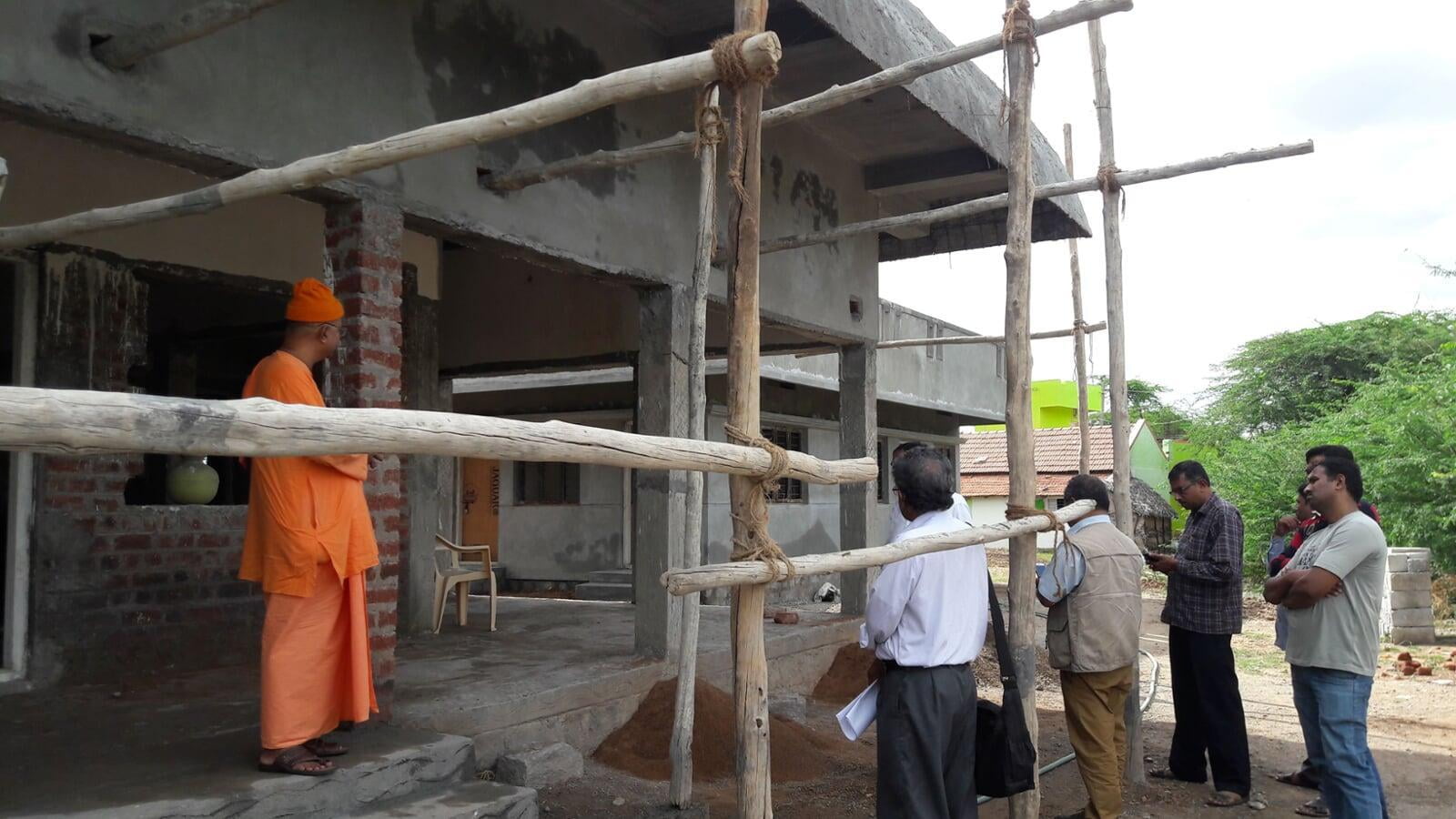

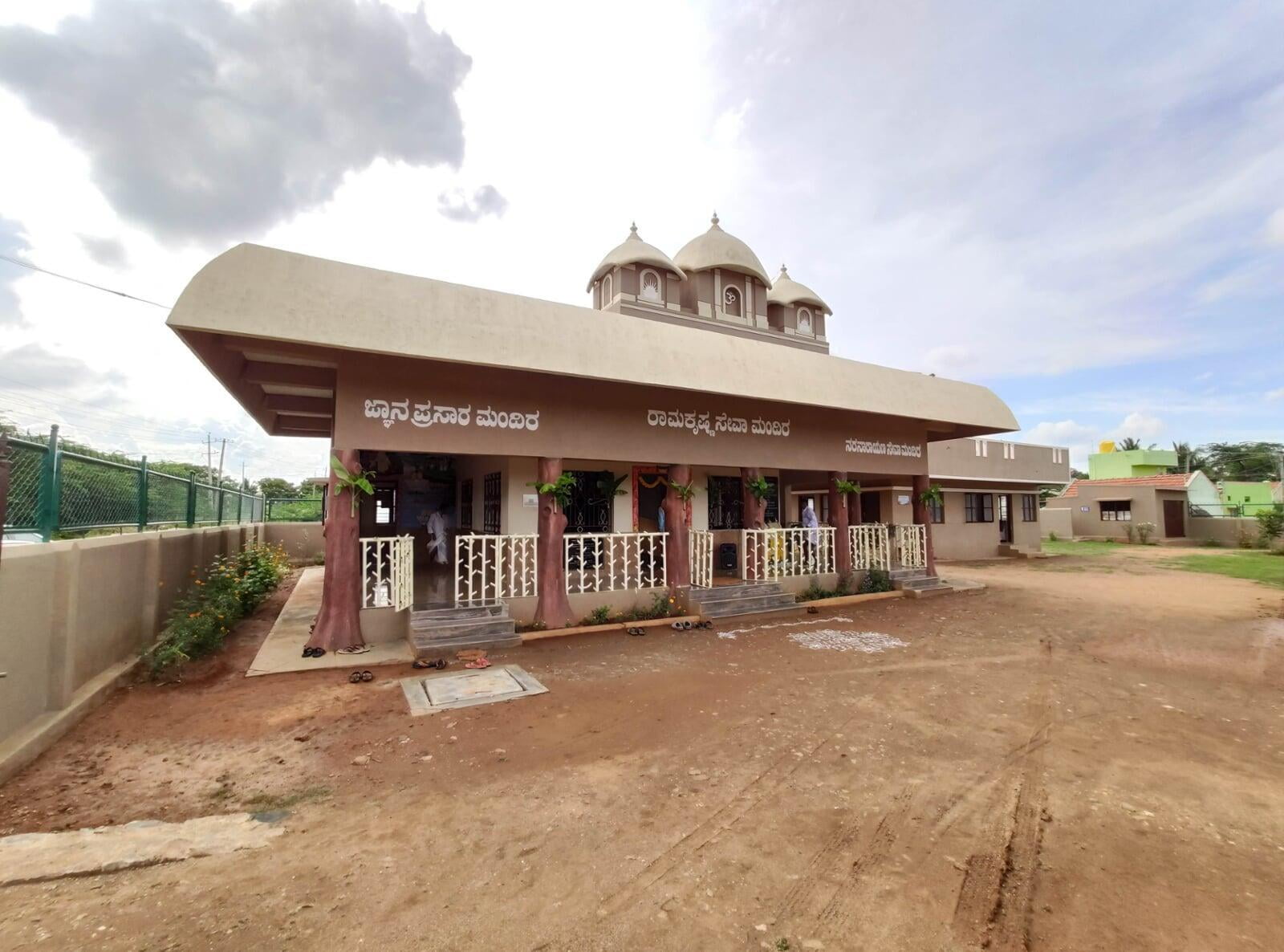

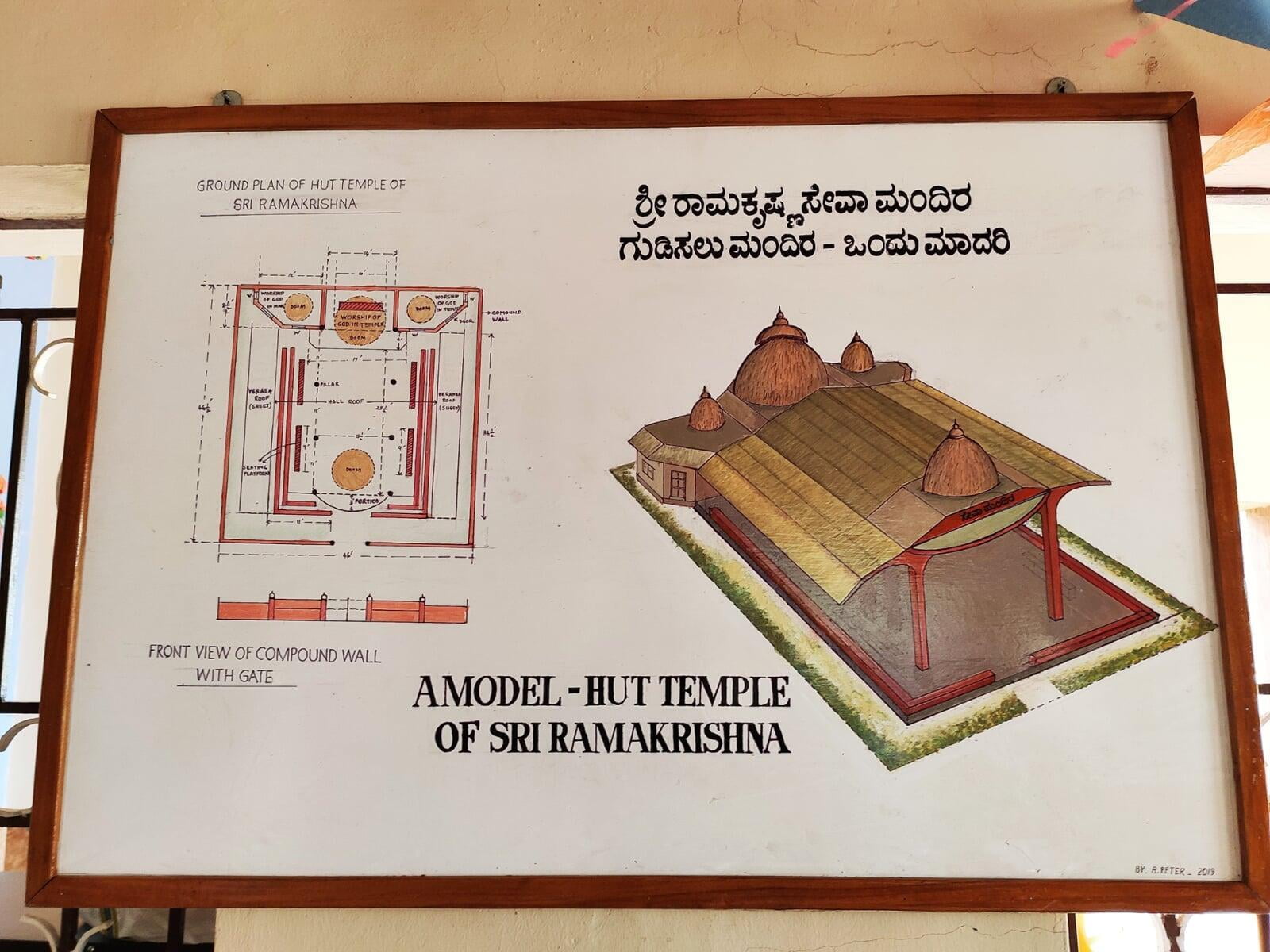
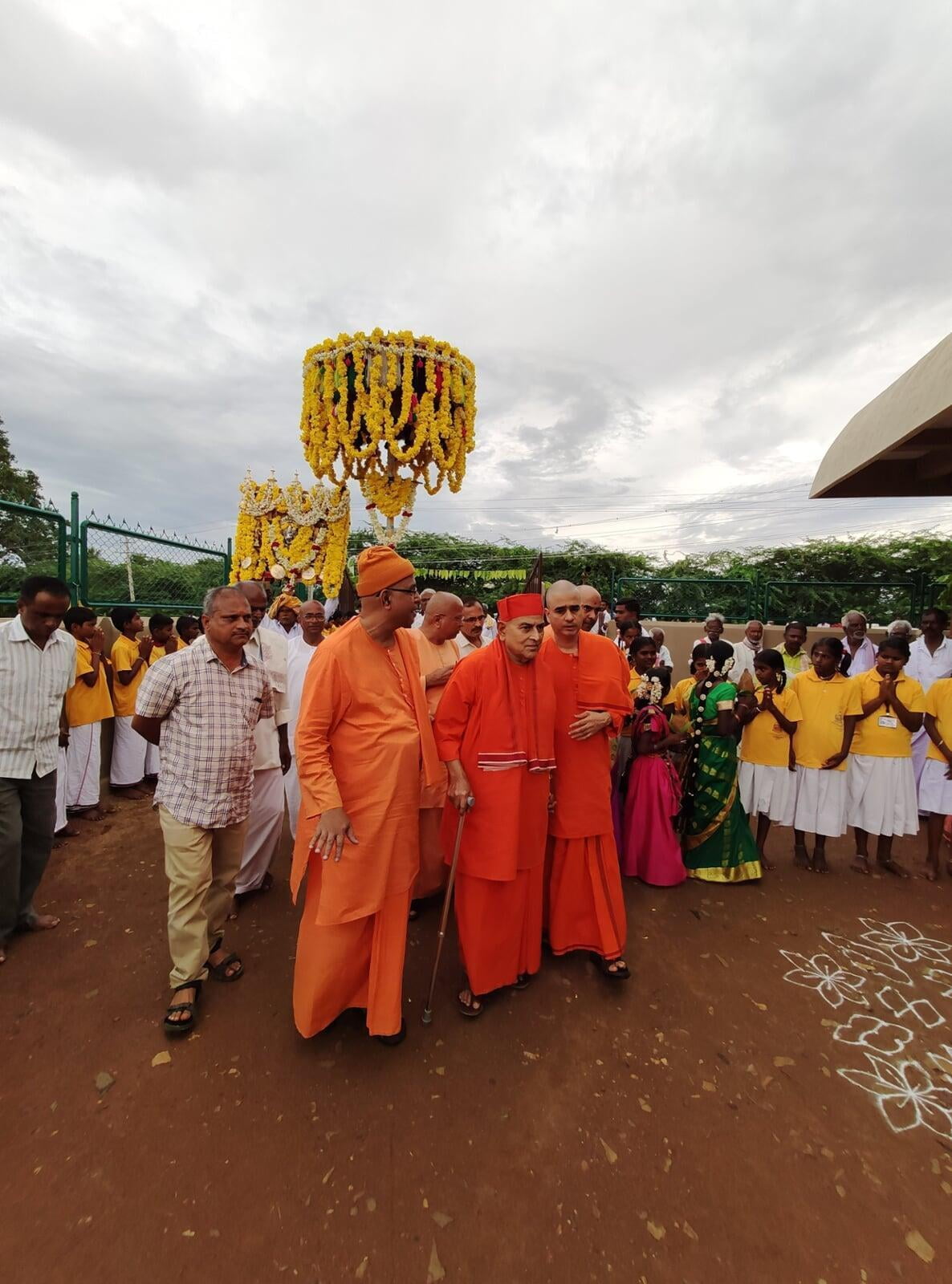

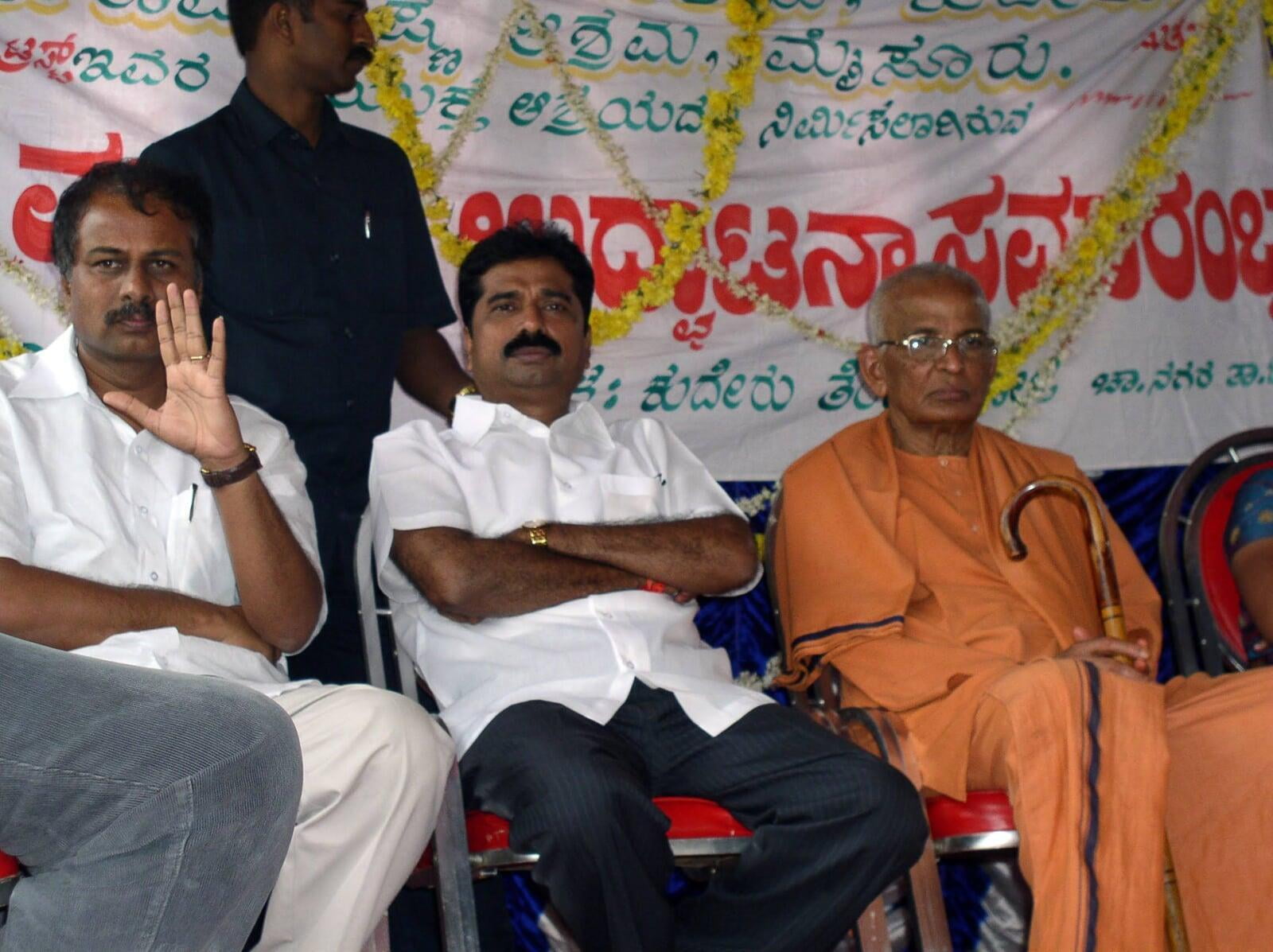
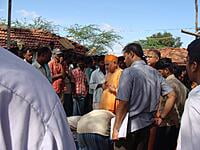
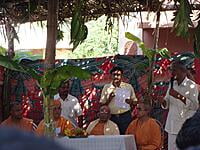
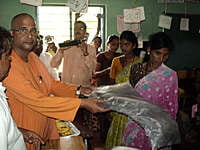
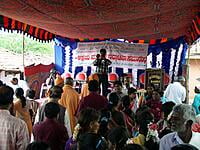
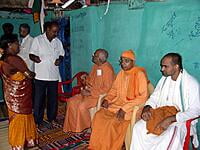
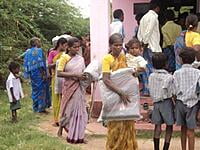
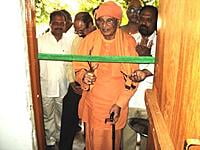
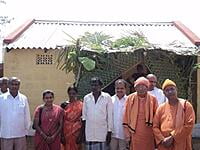
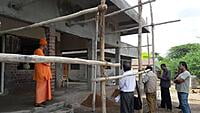
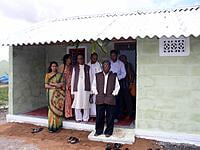

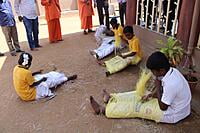
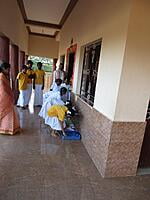

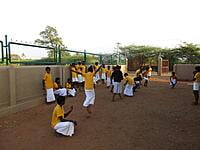
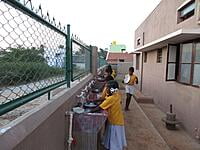
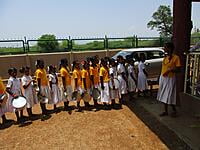

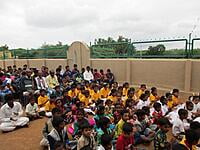


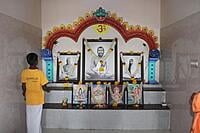
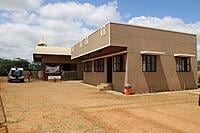
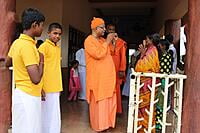
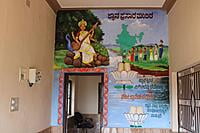
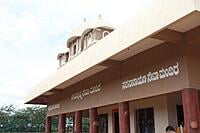
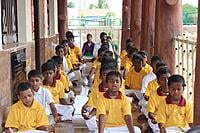
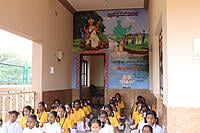
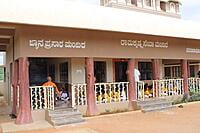
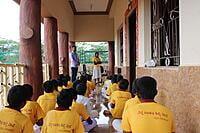
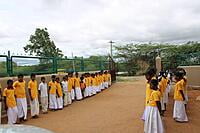
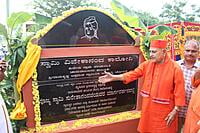
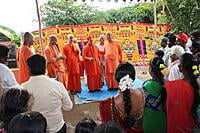
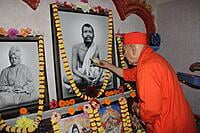
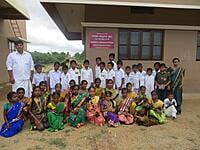
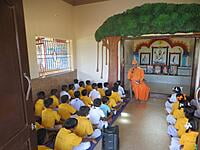

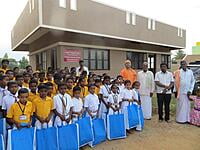
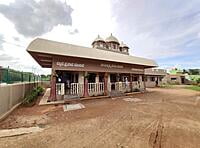
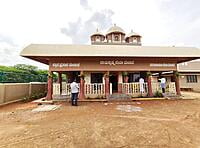
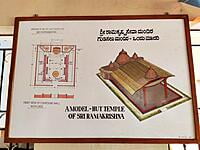
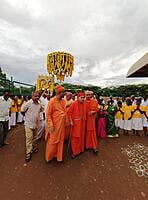
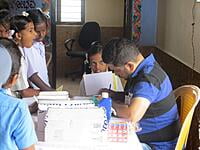
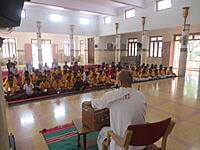
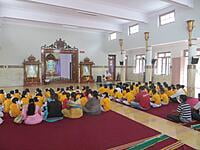
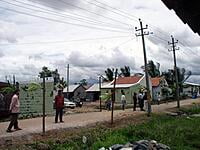

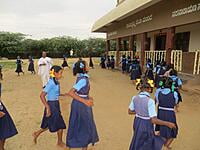
Seva Mandira Prayer & Spoorthi Gite
ಓಂ ಶ್ರೀ ಗುರುಭ್ಯೋ ನಮಃ | ಹರಿಃ ಓಂ|
ಓಂ ಸಹ ನಾವವತು | ಸಹ ನೌ ಭುನಕ್ತು |
ಸಹ ವೀರ್ಯಂ ಕರವಾವಹೈ
ತೇಜಸ್ವಿನಾವಧೀತಮಸ್ತು ಮಾ ವಿದ್ವಿಷಾವಹೈ||
ಓಂ ಶಾಂತಿಃ ಶಾಂತಿಃ ಶಾಂತಿಃ ||
ಓಂ ಅಸತೋ ಮಾ ಸದ್ಗಮಯ |
ತಮಸೋ ಮಾ ಜ್ಯೋತಿರ್ಗಮಯ|
ಮೃತ್ಯೋರ್ಮಾ ಅಮೃತಂ ಗಮಯ||
ಓಂ ಶಾಂತಿಃ ಶಾಂತಿಃ ಶಾಂತಿಃ ||
ಸರ್ವೇ ಭವಂತು ಸುಖಿನಃ ಸರ್ವೇ ಸಂತು ನಿರಾಮಯಾಃ |
ಸರ್ವೇ ಭದ್ರಾಣಿ ಪಶ್ಯಂತು ಮಾ ಕಶ್ಚಿದ್ದುಃಖಭಾಗ್ಭವೇತ್||
ಓಂ ಸ್ಥಾಪಕಾಯ ಚ ಧರ್ಮಸ್ಯ ಸರ್ವಧರ್ಮ ಸ್ವರೂಪಿಣೇ|
ಅವತಾರ-ವರಿಷ್ಠಾಯ ರಾಮಕೃಷ್ಣಾಯ ತೇ ನಮಃ ||
ಜನನೀಂ ಶಾರದಾಂದೇವೀಂ ರಾಮಕೃಷ್ಣಂ ಜಗದ್ಗುರುಂ|
ಪಾದಪದ್ಮೇ ತಯೋಃ ಶ್ರಿತ್ವಾ ಪ್ರಣಮಾಮಿ ಮುಹುರ್ಮುಹುಃ ||
ನಮಃ ಶ್ರೀಯತಿರಾಜಾಯ ವಿವೇಕಾನಂದ – ಸೂರಯೇ |
ಸಚ್ಚಿತ್ಸುಖ – ಸ್ವರೂಪಾಯ ಸ್ವಾಮಿನೇ ತಾಪಹಾರಿಣೇ ||
ಓಂ ಪೂರ್ಣಮದಃ ಪೂರ್ಣಮಿದಂ ಪೂರ್ಣಾತ್ ಪೂರ್ಣಮುದಚ್ಯತೇ |
ಪೂರ್ಣಸ್ಯ ಪೂರ್ಣಮಾದಾಯ ಪೂರ್ಣಮೇವಾವಶಿಷ್ಯತೇ ||
ಓಂ ಶಾಂತಿಃ ಶಾಂತಿಃ ಶಾಂತಿಃ || ಹರಿಃ ಓಂ ತತ್ಸತ್ ||
||ಶ್ರೀರಾಮಕೃಷ್ಣಾರ್ಪಣಮಸ್ತು||
- Seva Mandira Spoorthi gite00:00
- Seva Manidra Prayer - Spoorti gite00:00
ಸೇವಾ ಮಂದಿರವು ನಿಜ ದೇವ ಮಂದಿರವು
ಮಾನವನೊಳಗಿನ ಮಾಧವ ಪೂಜೆಯ
ಸತತವು ಮಾಡುವೆವು
ನಾವು ಧನ್ಯತೆ ಪಡೆಯುವೆವು ||ಸೇವಾ||
ಸಮತೆಯ ಸಾರುವೆವು
ಪ್ರೇಮವ ಸ್ಫುರಿಸುವೆವು
ರಾಮಕೃಷ್ಣ ಶಿವ ತೋಟದಿ ಸುಂದರ
ಕುಸುಮಗಳಾಗುವೆವು, ಸೇವೆಯ
ಸುಗಂಧ ಬೀರುವೆವು ||ಸೇವಾ||
ದುರ್ಗುಣ ತೊರೆಯುವೆವು
ಸದ್ಗುಣ ಬೆಳೆಸುವೆವು
ಶಾರದ ದೇವಿಯ ಪ್ರಾರ್ಥನೆ ಮಾಡುತ
ಜ್ಞಾನವ ಬೆಳಗುವೆವು
ವಿಜ್ಞಾನವ ಪಡೆಯುವೆವು ||ಸೇವಾ||
ವಿದ್ಯೆಯ ಕಲಿಯುವೆವು
ಬುದ್ಧಿಯ ಬೆಳೆಸುವೆವು
ಸ್ವಾಮಿ ವಿವೇಕಾನಂದರ ಮಾರ್ಗದಿ
ಧೈರ್ಯದಿ ಬಾಳುವೆವು
ನಾವು ಧೈರ್ಯದಿ ಬಾಳುವೆವು ||ಸೇವಾ||
ಶಿವನ ಜ್ಞಾನದೊಳು
ಪರಶಿವನ ಧ್ಯಾನದೊಳು
ಜೀವರ ಸೇವೆಯ ಮಾಡುತ ಬಾಳನು
ಸಾರ್ಥಕಗೊಳಿಸುವೆವು
ನಾವು ಸಾರ್ಥಕಗೊಳಿಸುವೆವು ||ಸೇವಾ||
ಜಾತಿ ರೋಗದ ಭೀತಿ ಕಳೆಯುತ
ನೀತಿ ಮಾರ್ಗದಿ ನಡೆವೆವು
ಒಂದೇ ಮಾನವ ಕುಲವು ಎನ್ನುತ
ವಿಶ್ವಧರ್ಮವ ಪಡೆವೆವು
ವೈರ ಮತ್ಸರ ಸ್ವಾರ್ಥ ವಂಚನೆ
ಕ್ರಿಮಿಗಳೆಲ್ಲವ ತೊಡೆವೆವು
ದೇಶ ಸೇವೆಗೆ ದೇಹ ಸವೆಸುವ
ದೀಕ್ಷೆ ಇಂದೇ ತೊಡುವೆವು
________
ಸರ್ವಸ್ತರತು ದುರ್ಗಾಣಿ
ಸರ್ವೋ ಭದ್ರಾಣಿ ಪಶ್ಯತು ।
ಸರ್ವಃ ಸದ್ಬುದ್ಧಿಮಾಪ್ನೋತು
ಸರ್ವಃ ಸರ್ವತ್ರ ನಂದತು ॥
- Swadesha Mantra - Ramesh00:00
ಸ್ವಾಮಿ ವಿವೇಕಾನಂದರು ನೀಡಿರುವ ಸ್ವದೇಶ ಮಂತ್ರ
ಆರ್ಯಮಾತೆಯ ಅಮೃತಪುತ್ರರಿರಾ, ಮರೆಯದಿರಿ, ನೀವು ಪೂಜಿಸುವ ಜಗದೀಶ್ವರನು ತ್ಯಾಗಿಕುಲ ಚೂಡಾಮಣಿ. ಮರೆಯದಿರಿ, ನಿಮ್ಮ ಸ್ತ್ರೀಯರ ಆದರ್ಶ ಸೀತಾ, ಸಾವಿತ್ರಿ, ದಮಯಂತಿಯರು. ಮರೆಯದಿರಿ, ನಿಮ್ಮ ವಿವಾಹ, ನಿಮ್ಮ ಐಶ್ವರ್ಯ, ನಿಮ್ಮ ಜೀವನ ಬರಿಯ ಇಂದ್ರಿಯ ಭೋಗಕ್ಕಲ್ಲ, ವ್ಯಕ್ತಿಗತ ಸುಖಕ್ಕಲ್ಲ. ಮರೆಯದಿರಿ, ನಿಮ್ಮ ಜನ್ಮವಿರುವುದೇ ಜಗನ್ಮಾತೆಯ ಅಡಿದಾವರೆಯಲ್ಲಿ ಬಲಿದಾನಕ್ಕಾಗಿ! ಮರೆಯದಿರಿ, ನಿಮ್ಮ ಸಾಮಾಜಿಕ ರಚನೆ ವಿಶ್ವವ್ಯಾಪಿ ಜಗಜ್ಜನನಿಯ ಕಾಂತಿಯನ್ನು ಪ್ರತಿಬಿಂಬಿಸುವುದಕ್ಕಾಗಿ ಇರುವುದು. ಮರೆಯದಿರಿ, ಅಂತ್ಯಜರು, ಮೂಢರು, ದರಿದ್ರರು, ನಿರಕ್ಷರಕುಕ್ಷಿಗಳು, ಚಂಡಾಲರು ಮತ್ತು ಚಮ್ಮಾರರು, ಎಲ್ಲರೂ ನಿಮ್ಮ ರಕ್ತಬಂಧುಗಳಾದ ಸಹೋದರರು! ವೀರಾತ್ಮರೇ, ಧೀರರಾಗಿ, ನೆಚ್ಚುಗೆಡದಿರಿ. ಭಾರತೀಯರು ನಾವು ಎಂದು ಹೆಮ್ಮೆ ತಾಳಿ ಸಾರಿ ಹೇಳಿ, ಭಾರತೀಯರು ನಾವು, ಭಾರತೀಯರೆಲ್ಲ ನಮ್ಮ ಸಹೋದರರು. ಸಾರಿ ಹೇಳಿ, ಮೂರ್ಖ ಭಾರತೀಯರೆಮ್ಮ ಸಹೋದರರು. ಬ್ರಾಹ್ಮಣ ಭಾರತೀಯರೆಮ್ಮ ಸಹೋದರರು, ಪಂಚಮ ಭಾರತೀಯರೆಮ್ಮ ಸಹೋದರರು. ನೀವು ಅಭಿಮಾನಪೂರ್ವಕವಾಗಿ ದಿಕ್ ತಟಗಳು ಅಣುರಣಿತವಾಗುವಂತೆ ತಾರಸ್ವರದಿಂದ ಸಾರಿ ಹೇಳಿ “ಭಾರತೀಯರು ನಮ್ಮ ಸಹೋದರರು, ಭಾರತೀಯರು ನಮ್ಮ ಪ್ರಾಣ, ಭಾರತೀಯ ದೇವದೇವತೆಗಳೆಲ್ಲರೂ ನಮ್ಮ ದೇವರು. ಭಾರತೀಯ ಸಮಾಜ ನಮ್ಮ ಬಾಲ್ಯದ ತೊಟ್ಟಿಲು, ತಾರುಣ್ಯದ ನಂದನವನ, ವೃದ್ಧಾಪ್ಯದ ವಾರಾಣಸಿ.” ಸಹೋದರರೆ, ಹೀಗೆ ಸಾರಿ: “ಭಾರತ ಭೂಮಿಯೆ ನಮ್ಮ ಪರಂಧಾಮ. ಭಾರತದ ಶುಭವೇ ನಮ್ಮ ಶುಭ.” ಹಗಲೂ ರಾತ್ರಿಯೂ ಇದು ನಿಮ್ಮ ಪ್ರಾರ್ಥನೆಯಾಗಲಿ, “ಹೇ ಗೌರೀನಾಥ, ಹೇ ಜಗನ್ಮಾತೆ, ಪೌರುಷವನ್ನು ನಮಗೆ ದಯಪಾಲಿಸು. ಹೇ ಸರ್ವಶಕ್ತಿಶಾಲಿನಿ, ನಮ್ಮ ದೌರ್ಬಲ್ಯವನ್ನು ದಹಿಸು. ಕ್ಲೈಬ್ಯವನ್ನು ಹೋಗಲಾಡಿಸು; ಪುರುಷಸಿಂಹರನ್ನಾಗಿ ಮಾಡು, ಪುರುಷಸಿಂಹರನ್ನಾಗಿ ಮಾಡು.”

